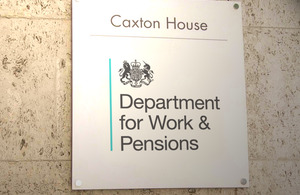Publication of DWP research report 690:how best to present state pension information and support retirement planning
Research published today by the Department for Work and Pensions identifies what understanding people have of the State Pension.

Research published today by the Department for Work and Pensions identifies what understanding people have of the State Pension, what works in terms of explaining elements of State Pension, and what prototype information packages will engage people and help them effectively plan for retirement.
This research highlights the risk of disengagement when communicating complex information. Use of a more customer focused approach, as proposed in the report, helps to address the issue.
Key findings from the research were:
- The evidence showed that there were many existing myths and misconceptions around the State Pension that limit understanding and could therefore prevent engagement. Examples of these are that the State Pension will not exist in the future, that it will lose its current value in the future, and that being married means you get less pension;
- Through the iterative research process, materials were produced using a number of different principles, including: content, format, language and layout. Use of these principles made it easier for respondents to start connecting with what can be a difficult subject. The information was framed in a way that was helpful and relevant, with prominently placed answers to their most important questions, such as: ‘what is the state pension?’, ‘will I get it?’, ‘how much will I get?’ and ‘when will I get it?’;
- The most important piece of information to communicate was the approximate amount of State Pension entitlement. Personalised information acted as a key ‘hook’ for customer interest and engagement and was most likely to provoke consideration of the personal implications of financial planning and what further action was required by the customer. It was found that a rough estimate of what they will receive was enough information for most respondents, especially if they knew how to get a more precise figure.
The availability of quick estimation tools could therefore be extremely important to engage people in learning more about the State Pension and consider how to make plans for later life;
- The use of rules of thumb and benchmarks, including giving respondents some idea of how much the State Pension can be, and the use of clear calls to action in the information, resulted in respondents suggesting there was a greater inclination to act on the information. This action, when promoted, could include requesting a State Pension forecast, tracing a lost pension from the past using the Pension Tracing Service, or asking their employer about a workplace scheme.
Notes to Editors:
- DWP Research Report No 690 - How best to present State Pension information and support retirement planning, is available on the DWP website: http://research.dwp.gov.uk/asd/asd5/rrs-index.asp
- The research was conducted on behalf of DWP by TNS-BMRB and the Futures Company. The report authors are Josh Hunt and Jo Phillips.
- The report is based on in-depth face to face interviews and focus groups with a total of 132 respondents.